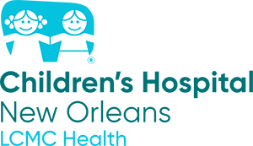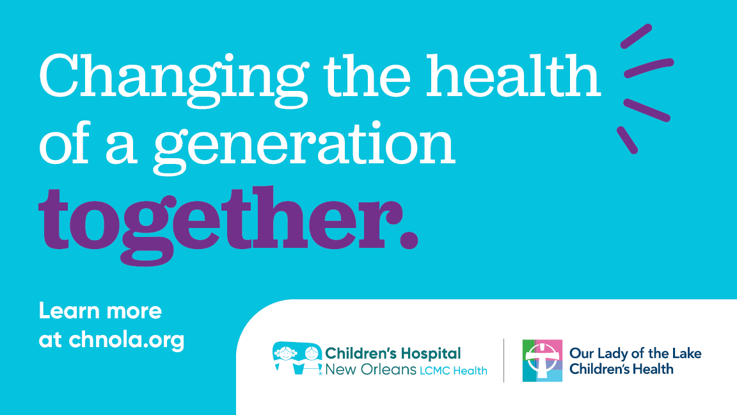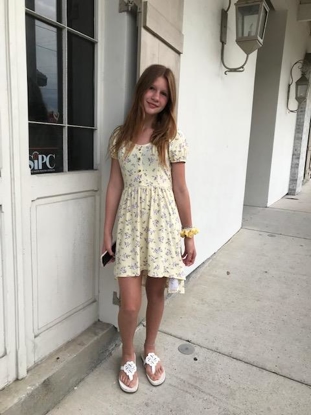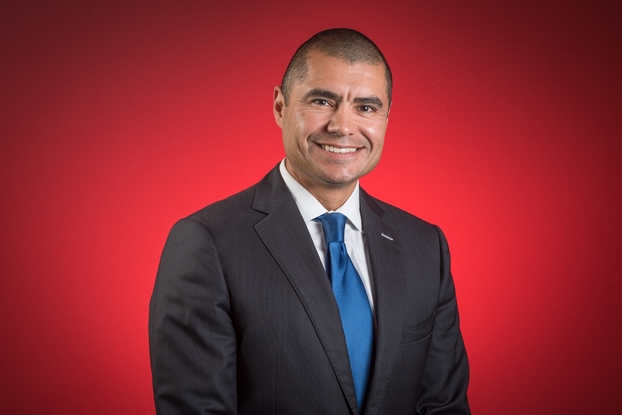Fifteen and Thriving: Surviving with Hypoplastic Right Heart Syndrome (HRHS)
- Category: Cardiology, Patient Stories
- Posted on:

At 15 years old, Sophia Liriano has been in and out of the Children’s Hospital New Orleans so often that it feels like a second home to her. The medical staff are part of her family. She knows every hallway and every floor. She knows where to find the best candy and snacks. She knows each nurse by name and has celebrated nearly every life milestone within those walls. And it’s a routine she knows will likely not change too much as she gets older.
She has had four open heart surgeries, three stomach surgeries, two hip surgeries, three knee surgeries and adenoids removed twice – just to name a few.
“When she was born, doctors found a whole dictionary full of things wrong physically. Her body basically created its own way of functioning,” said Kelly Usery, Sophia’s mother.
On August 24, 2006, Sophia was born with a congenital heart defect called Hypoplastic Right Heart Syndrome (HRHS), which affects normal blood flow through the heart. In addition, she had an unbalanced AV canal defect, single ventricle defect, has Pulmonary Atresia and dextrocardia (a condition where the heart is pointed toward the right side of the chest) and Heterotaxia syndrome. Doctors also discovered she has situs inversus, which is a genetic condition in which the organs in the chest and abdomen are positioned in a mirror image from their normal positions.
addition, she had an unbalanced AV canal defect, single ventricle defect, has Pulmonary Atresia and dextrocardia (a condition where the heart is pointed toward the right side of the chest) and Heterotaxia syndrome. Doctors also discovered she has situs inversus, which is a genetic condition in which the organs in the chest and abdomen are positioned in a mirror image from their normal positions.
“It’s a little tricky with Sophia, because things just aren't where they're supposed to be. Her heart is actually on the on the opposite side. It's upside down and it's backwards,” said Kelly.
All of this came as a big shock to Kelly who had no indication there was anything physically wrong with her baby girl during the entire pregnancy.
“When I gave birth, she was blue, and they took her away. For hours, I had no idea what was wrong,” said Kelly.
After being stabilized, Sophia was taken the next day to the Heart Center at Children’s, which has a dedicated team of specialists includes physicians, surgeons, nurses and support staff who are trained to care for the unique needs of children with heart disease as well as their families
Dr. Robert Ascuitto, who has since retired, a cardiologist at Children’s, came to speak to Kelly about next steps. He explained that when a child is born with HRHS, the surgeons must perform a series of three procedures in a particular order to increase blood flow to the body to bypass a poorly functioning right-side of the heart.
Sophia was just 12 days old when she had her first open heart surgery, a BT shunt Blalock-Taussig (BT) by Dr. Timothy Pettitt and Joseph Caspi. In this surgery, the doctor created a small tube that connects the arterial circulation to the pulmonary circulation in order to get more blood to the lungs. This is the first in a series of operations required to correct complex congenital (present at birth) heart defects.
While she recovered from the surgery, Sophia faced another issue: eating.
“After surgery, they tried to feed her and she aspirated. They had to put a feeding tube in. Then her stomach became detached, and she had to go in for another surgery to re-attach it,” said Kelly. “She had three surgeries before she went home for the first time. The good news is that she recovered well after each surgery.”
Sophia was in the NICU for the first three months of her life, but that was just the beginning. Over that first year, Sophia was in and out of the hospital nearly every other week.
“When she turned 8 months old, Sophia’s oxygen saturation dropped to 50%. Doctors told me that’s when they knew she was ready for her next surgery,” said Kelly. 
Sophia would have the bi-directional fenestrated Glenn Shunt Procedure that would return oxygen-poor blood from the upper part of the body to the heart. While Sophia recovered well from this surgery, her mother discovered something else wasn’t developing the way it should.
“Sophia was hitting all her major milestones mentally – babbling and talking– but by two years old, she still couldn’t walk,” said Kelly. “We had her checked out again, and turned out she had a hip issue that prevented her from walking. She was only scooting around.”
At 2 years old, Sophia wanted to dance. “I told her you have to walk before you dance!” said mom.
 She was diagnosed coxa breva, coxa valga, and a leg-length difference. Sophia leaned and limped when she walked but she always had something going on with her health that would interfere with doing anything about the leg. It wouldn’t be until Sophia entered 6th grade that she would have a hip surgery at Children’s to fix these issues.
She was diagnosed coxa breva, coxa valga, and a leg-length difference. Sophia leaned and limped when she walked but she always had something going on with her health that would interfere with doing anything about the leg. It wouldn’t be until Sophia entered 6th grade that she would have a hip surgery at Children’s to fix these issues.
When Sophia was 3 years old, she had the Fontan procedure, the third open-heart surgery to fix her HRHS. “This was the hardest surgery to go through. Sophia spent six weeks in bed and had to go through physical therapy to walk again,” said Kelly.
As Sophia grew, she would have several other heart procedures including a heart catherization in 2014 to coil some collateral veins that were stealing her blood and not allowing her to get enough oxygen and then in 2018, she would have three shunts put into her conduit to open up the narrowing and for her to receive adequate blood flow.
To take care of Sophia, Kelly was forced to quit her job at the Credit Union and started taking classes for nursing school. She relied on loans, and her parents to make ends meet. Doctors advised her not to take Sophia to a daycare due to the risk of getting sick, but that caused its own developmental challenges – socially. 
“I took her to the playground, and she just kind of sat there and watched everybody. I realized she had never seen anybody play before. She can literally carry on an adult conversation about her health and all these other things, but I didn’t want her to miss out on being a kid,” said Kelly.
Now at 15 years old, Sophia is excelling – even while going through about one surgery per year. She continues to see her cardiologist, Dr. Stephan Sernich. In January, she will be transitioning to her adult congenital cardiologist Dr. Michael Brumund who will follow her on a regular basis to monitor her heart to make sure it is functioning properly.
.jpg) “I recently met Sophia as part of our transitional ACHD clinic, a clinic dedicated to getting our adolescent patients ready for adulthood and the unique problems that they may be faced with. We build on the care of provided for so long by her previous cardiologists and try to ensure that the law adolescents have the tools they need to succeed as adults. I am really looking forward to following Sophia as she learns how to manage her heart condition into adulthood.”
“I recently met Sophia as part of our transitional ACHD clinic, a clinic dedicated to getting our adolescent patients ready for adulthood and the unique problems that they may be faced with. We build on the care of provided for so long by her previous cardiologists and try to ensure that the law adolescents have the tools they need to succeed as adults. I am really looking forward to following Sophia as she learns how to manage her heart condition into adulthood.”
“She’s doing great academically and going to an Advanced Academy. She does well in school and is a well-rounded kid. She can do things other teenagers can do her age, and she loves to dance,” said Kelly. “She will continue to need surgeries as she grows, but she is making the best of her kind of ‘normal.”
It’s a ‘normal’ made possible thanks to the dedicated doctors and nurses at Children’s, which Kelly credits to helping her and her daughter through every high and low during their entire journey.
“While I was taking care of Sophia at the hospital, it was a lot, you know. I was studying to be a nurse, and the nurses were so kind helping me study. There were many times that I just wanted to quit, but the nurses were encouraging me every step of the way. They’re truly like family to us.”
To learn more about the Heart Center at Children’s as well as the Adult Congenital Heart Program, please visit: https://www.chnola.org/our-services/heart-center/.



